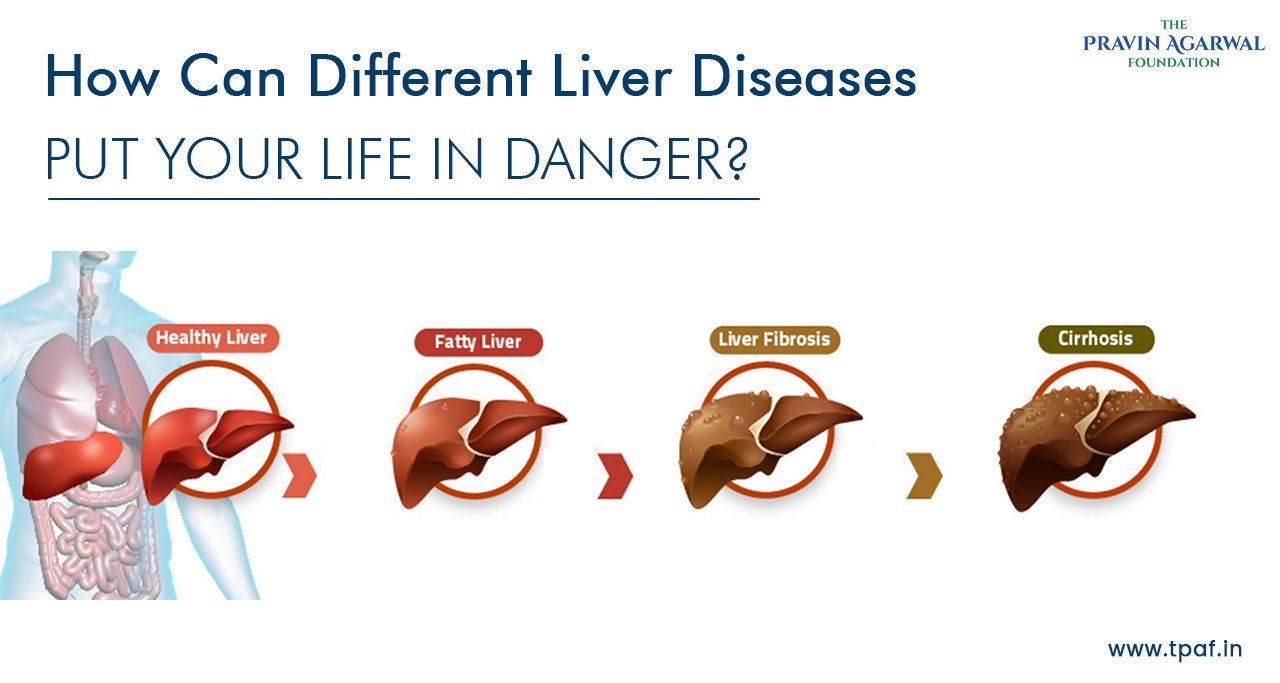Latest Update
Blogs

November 29,2019
/ adminHow Can Different Liver Diseases Put Your Life in Danger?
A liver performs many functions that keep you healthy. It turns nutrients into chemicals that a person’s body needs. It filters out toxins from the body and converts food into energy. A healthy liver has a fantastic capability to grow back or regenerate when damaged. Therefore, when a liver does not work correctly, it can affect the whole body.
As per the study, liver diseases account for approximately 2 million death/year globally. Liver transplantation is the 2ndmost common organ transplantation performed every year worldwide.
Most people do not think much about the liver and ways to keep it healthy, but it performs several vital functions. Therefore, it is essential to understand about different types of liver diseases, treatments, and resources available.
This blog speaks about the diverse types of liver diseases, risk factors, treatment, diagnosed, and available resources for people with liver diseases.
Let us first start with some common forms of liver disease.
- Nonalcoholic Fatty Liver Diseases: As per the name suggested, NAFLD’s main characteristic is too much fat stored in liver cells. This fat buildup is usually not because of alcohol consumption but because of metabolic syndrome incorporating type 2-diabetes, high blood pressure, and obesity. Typically, a child will not experience any symptoms if he/she is suffering from NAFLD. Weight loss is an effective treatment for NAFLD.
- Hepatitis: Hepatitis is a kind of inflammatory condition of the liver. A viral infection usually causes it, but there are other symptoms also for it, such as drugs, toxins, and alcohol. Treatment options vary on which type of hepatitis a child has. The most common five types of viral hepatitis are:
- Hepatitis A
- Hepatitis B
- Hepatitis C
- Hepatitis D
- Hepatitis E
- Cirrhosis: Cirrhosis is a life-threatening stage of the liver scar, and it happens because of different forms of liver diseases and disorders like hepatitis and prolonged alcoholism.
- Hemochromatosis: It is a form of liver disease in which iron overloads is build up in a child’s body. In hemochromatosis, the body absorbs excessive iron, and it has no way to get rid of it. Therefore, the body stores this fat in the liver, heart, or pancreas. It damages them and can make a child’s organs stop working.
Risk Factors for Liver Diseases
There are varieties of risk factors that can cause liver disease. The most common risk factors are as follows.
- Alcohol consumption
- Blood Borne Viruses
- Obesity
- Metabolic Syndrome- high levels of blood sugar, high triglycerides, low levels of HDL, and high blood pressure.
- Genetic condition
- Exposure to toxins
- Harmful supplements
Because of the above-discussed reasons (risk factors), a child may be at high-risk for liver disease.
Diagnosis
For diagnosis of the liver disease, a doctor must find the cause and extent of the liver damage. Usually, a doctor starts with a health history and detailed physical examination. After that, a doctor may then recommend the following tests.
- Blood tests
- Biopsy
- Imaging tests such as CT scan and MRI
- Ultrasound
Treatment
Treatment for liver diseases depends on a child’s diagnosis. Some liver diseases a doctor treat by suggesting some lifestyle changes such as stopping alcohol consumption, losing weight, or taking a healthy, balanced diet. Sometimes a doctor may prescribe medicines. If a child is suffering from chronic liver diseases, then a doctor may perform a pediatric liver transplant. Liver transplant is the best option if the causes of liver disease have led to liver failure.
Untreated Liver Disease and the Risk of Liver Cancer
If a child’s liver disease goes untreated, it can result in cirrhosis and end-stage liver disease. A child may have trouble thinking and portal hypertension. If a child has cirrhosis, he/she is at high risk of liver cancer. Besides, other types of liver diseases such as NAFLD, hemochromatosis, and chronic hepatitis B and C are the reason for a higher risk of developing liver cancer.
Available Liver Diseases Resources
If a child has liver disease, educating themselves and finding the right support parents need is crucial. When parents work with the child’s healthcare team to treat his/her condition, there are many online resources there to help answer some of the questions they have. Many liver transplant support groups online and NGOs for liver transplant help build awareness or raise money for liver disease. One can easily acquire information on the hospitals performing pediatric liver transplants online. If a child is alcohol addicted or trying to quit smoking or losing weight, some local hospitals or a doctor is a great resource to help find the encouragement and tools they need.
Conclusion
In summary, there are the above-discussed types of liver disease. Regardless of liver disease type, it can damage a child’s liver, and as time passes, it will be likely to progress. Therefore, it is essential to catch the liver disease at an early stage and gets the proper treatment for the same. If a child receives the treatment in the inflammation and fibrosis stages, his/her liver may have a chance to heal it and recover. Therefore, parents should talk to a doctor about liver disease and find out if his/her child is at risk or if he/she should undergo any tests or vaccinations.
 Donate
now
Donate
now



Related Posts
Aayush Jadav- A Remarkable Journey of Hope
moreKaivalya Mayane- A Remarkable Journey of Hope
moreVendant Joshi- A Remarkable Recovery
more